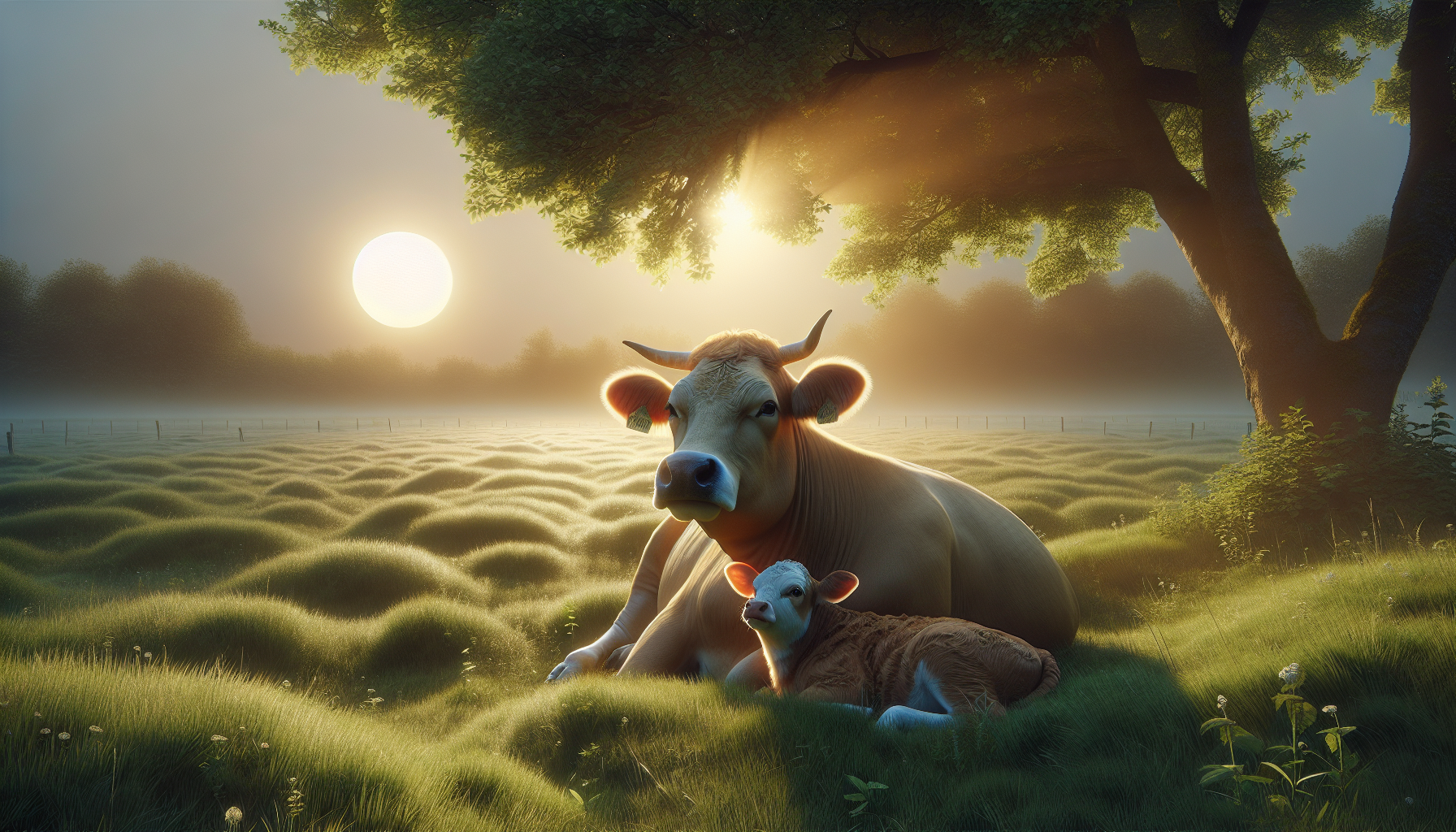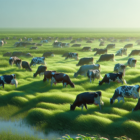Do cows need to be milked?

Milking cows has been a cornerstone of agriculture for centuries. But as we move forward into an era where sustainability, animal welfare, and environmental concerns are increasingly important considerations, the question becomes more pressing than ever before. Do cows truly require milking, or can they thrive without it?
The Purpose of Milking
Milking has been a vital part of human society for thousands of years. In ancient civilizations, milk was not only a source of nutrition but also played a significant role in cultural and religious practices.
In many cultures, milk was considered a sacred substance, often associated with fertility, prosperity, and divine power. For example, the ancient Greeks believed that milk had healing properties and used it to treat various ailments. Similarly, in Hinduism, milk is considered an offering to the gods and is used as part of religious rituals.
In modern times, milking has become a crucial aspect of industrial-scale dairy farming operations. Dairy farmers breed cows specifically for their ability to produce large quantities of high-quality milk, which is then processed and packaged for human consumption.
The Process of Milking
Milking involves the extraction of milk from a cow’s udders using specialized equipment or manual techniques. The process typically begins with cleaning the cow’s udder and teats to prevent bacterial contamination. This is followed by attaching suction tubes to the teats, which gently pull the milk out.
Modern milking systems use automated technology to streamline the process, reducing labor costs and increasing efficiency. However, many dairy farmers still prefer traditional methods, citing the importance of human interaction with their animals and the ability to monitor cow health and behavior more closely.
But do cows need to be milked? In other words, would they still thrive as animals if we didn’t extract their milk?
The Natural Behavior of Cows
Cows are designed to graze on a variety of plants, including grasses, legumes, and leaves. In their natural habitat, herd members have access to diverse plant species, which provides essential nutrients for optimal health. After consuming grasses and other vegetation, the cow burps up and re-chews its food several times before microorganisms convert it into energy and proteins.
The nutrients from this process are absorbed into the bloodstream and delivered to the mammary glands, where they bond with sugars from the liver to form milk.
In the wild or in natural grazing environments, cows don’t produce excess milk. Their udders are designed to nourish their calves with a small amount of milk during lactation periods.
Domesticated cows, on the other hand, have been selectively bred for high milk production over thousands of years. This selective breeding has led to changes in their physiology and behavior, making them more prone to producing excess milk that is not intended for calf consumption.
In nature, cows would typically only produce enough milk to sustain their own calves, with any surplus being absorbed by the cow’s body or eliminated through waste. So, do we really need to be milking these animals?
What Happens in The Farm
Cows are intelligent and social creatures that thrive in environments where they can move freely, graze naturally, and interact with other cows. However, the reality is often far from this ideal scenario. Many dairy farms prioritize efficiency over animal well-being, leading to cramped living conditions, inadequate nutrition, and stress for the animals.
Milking itself can also be stressful for cows, especially if done incorrectly or without proper care. The process of milking requires careful handling and attention to detail to avoid discomfort, pain, and even injury to the cow’s udders.
It’s often misunderstood that cows produce milk constantly throughout their lives. In reality, mother cows only start producing milk after giving birth to calves. This is because hormonal changes occur in the cow’s body, causing it to produce milk intended for its baby.
Farmers then separate the mothers from their babies and set up milking machines to collect the milk over a period of 10 months. The collected milk is used for human consumption.
Do Diary Cows Need To Be Milked?
Cows do not inherently “need” to be milked. In fact, they are able to naturally regulate their own lactation and udder health without human intervention.
However, dairy farming practices have led to the development of milking as we know it today. Milking allows farmers to harvest milk for consumption while also providing important benefits such as monitoring cow health and detecting any potential issues with the udders or mammary glands.
Regular milking can help identify problems early on, ensuring prompt treatment and reducing stress on the animal. Additionally, modern dairy farming practices prioritize cow welfare by minimizing weight on their udders during milking, which is essential for maintaining overall well-being.
While cows do not “need” to be milked in a natural sense, human intervention has become an integral part of dairy farming. Domesticated dairy cows do indeed produce significantly more milk than their wild or undomesticated counterparts.
Through selective breeding and improved management practices, modern dairy farmers have been able to increase the yield of individual cows. Holstein-Friesian cattle, a popular breed for dairy production, are bred to produce very high yields of milk. In contrast, undomesticated or wild cows do not have the same level of selective breeding and management practices applied to their care. As such, they would likely produce much less milk than domesticated dairy cows.
What Happens If You Don’t Milk a Diary Cow
Milk yields have increased significantly over time. In 1910, an average Dutch cow produced around 2,500 liters of milk per year. By 1934/1938, this had risen to 3,400 liters. Today, a dairy cow can produce up to 9,000-10,000 liters annually.
When dairy cows are not milked, their mammary glands undergo involution, a process where the glandular tissue shrinks and becomes less functional. This can lead to teat stenosis, a narrowing of the teat orifice that makes it difficult for milk to flow out. Mastitis infections can also occur in pre-lactating heifers due to swelling or formation of blood clots.
If left unmilked for an extended period, dairy cows may experience partial recovery of lactation function when milking is resumed. However, this process can be variable among individual cows and may not fully restore milk yields.
Additionally, some dairy cows may leak milk from the sphincter. This leakage can occur during early lactation when the udder cistern is full or the teat sphincter relaxes easily in response to oxytocin.
In rare cases, dairy cows may leak milk continuously due to severe teat injuries or abnormal streak canals. These persistent leakers are at risk of developing mastitis and should be removed from the herd to prevent further complications.










